Do you have a movie recorded on your tablet and want to watch it on the big screen? Maybe you have photos stored there, and you want to show them to all your relatives? That is why we decided to tell you how to connect a tablet to a TV via a USB or HDMI cable. Unfortunately, in the first case there is only one way. And it doesn't always work. In particular, this applies to new devices - for the most part, their TVs are not detected, and then you will have to resort to using an HDMI cable.
Connect tablet to TV via USB
If you have a MicroUSB - USB cable, we can proceed: As noted above, this method does not always work with new devices on versions operating system above android 4.4.There is a solution - buying an HDMI-MicroUSB cable.
Using an HDMI cable to connect your tablet to a TV
First of all, I would like to note that the use of this cable is much more interesting option. With it, you can display on the TV screen not only photos, videos or play music. Everything that is displayed on the tablet will be duplicated on the TV display. It can be games, and an open browser window - in general, everything that your heart desires.The setup process is also extremely simple:
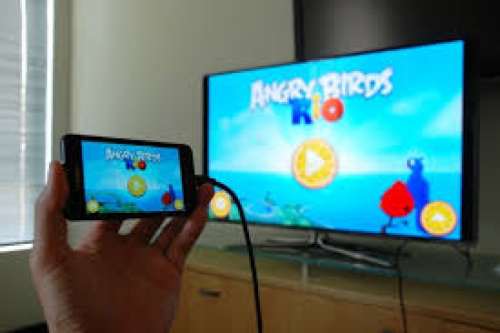 Now you can turn on content of any type on the tablet (it is controlled from it) and it will be displayed on the TV.
Now you can turn on content of any type on the tablet (it is controlled from it) and it will be displayed on the TV. 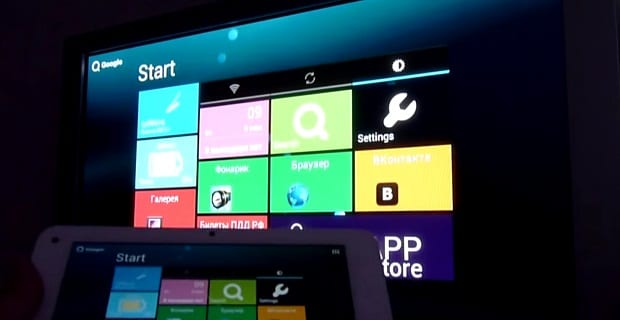
Finally, I would like to note that the developers took into account one interesting nuance when using the HDMI connection of the tablet to the TV - the first is charged from the last, therefore, in the most right moment it won't overcharge or turn off.
If you have a choice between connecting your tablet to your TV via HDMI or USB cable- always choose the first option, it works with all devices, regardless of the version of the operating system, provided that the TV has a connector of this type and has advanced functionality and better data transfer.
There are many possibilities for these devices to work together. You can display an image or work with tablet files on a large screen using a wired or wireless connection. Depending on the model of the mobile gadget and TV, you will need different adapters to pair them.
Connection methods
So how do you connect your tablet to your TV? There are several ways to turn it into a multimedia center. For this use:
- WiFi;
- Miracast standard;
- HDMI cable;
- USB cable;
- cable
The image on the mobile device may differ from the one transmitted depending on the resolution of the TV screen.
WiFi
The tablet can be connected wirelessly over a Wi-Fi network using DLNA technology. You can connect it to a TV if you make it the last part of your home LAN. Connecting a tablet to a TV via Wi-Fi requires a router. To set up a wireless connection, make sure that your TV (optional):
- connected to a router;
- has a built-in Wi-Fi module;
- has a slot for WiFi connections adapter (usually a USB port).
Your TV's specifications should indicate that it supports Wi-Fi Direct, which indicates that it can connect via Wi-Fi.
On the remote, press the Smart-TV or menu button and select network settings. A list of all available Wi-Fi protocols will be displayed on the screen. Connect to your network. You may need to enter a password. If automatic connection is set in the settings, the TV will connect to the Internet on its own.
Now add a mobile device to the network. You can connect your tablet to your TV through various apps. Make sure you have extra software, which must be downloaded to the gadget so that it can detect your TV. Each program is individually developed for different manufacturers and is available for download.
For android devices, the most common application is BubbleUPnP. It is freely available for download from Play market. Install it. When launched, the application will determine the devices available for pairing, including the one connected to WiFi networks TV set. After selecting it, the program will analyze all multimedia files on your portable gadget, which you can play on a wide screen. Choose a file. The TV will ask for confirmation to open it. Agree and enjoy watching your content through your TV.
The mobile device must be connected to the same home network like TV.

This technology will allow you to connect to your TV without unnecessary wires. This connection standard will not require the use of intermediaries between the two devices. The main condition is that both the tablet and the device to which you are connecting must support this technology. However, only advanced models are equipped with it.
Start with TV. Modern models support Smart-TV. Use it: find the Screen Share function in the TV menu and activate it. You have now connected Miracast.
Go to tablet. Make sure Wi-Fi is turned on. Various manufacturers put the wireless connection button in various settings sections. It can be in "advanced" or "screen". Usually referred to as Miracast Wireless Screen or Play to. Press it, and the tablet will automatically search for available devices to connect. Synchronization will begin, after which you will be able to display information from the gadget on the big screen.
This technology is available for Android tablets with version 4.4 and higher.

The least complicated way to connect a tablet to a TV is to use an HDMI cable. Choose the cable for yourself by determining the comfortable length of the wire. As a rule, all modern TVs have an HDMI input. All that is required is to connect both devices with a wire and activate HDMI in the settings.
To connect your tablet to a TV, please note the following. Not all portable devices can connect directly to HDMI, as they often do not have the right port. To do this, you will need to purchase an MHL adapter. It connects to the tablet via micro-USB. The adapter kit includes an additional charging cable that connects to the power source.
Connecting the tablet to a TV via HDMI will not only allow you to view individual files, but will fully transfer the image and sound from your gadget to the big screen.
An HDMI cable is not included with your tablet. Sold separately.
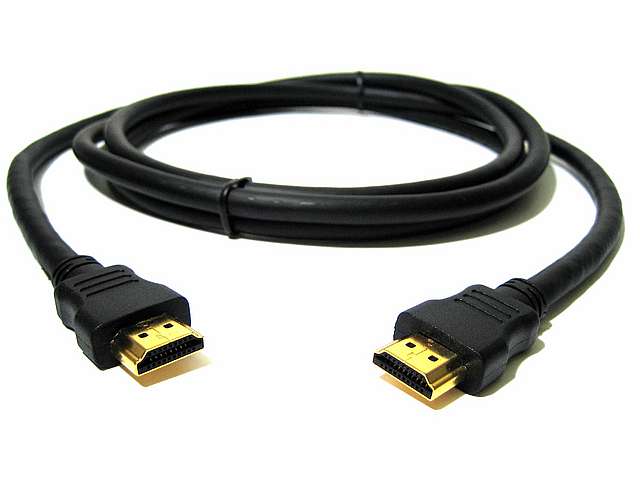
How to connect tablet to TV via USB? With a USB cable, you can connect your mobile device. However, you will not be able to broadcast an image from one screen to another.
The tablet will be perceived by the TV as an information carrier or as a regular flash drive. That is, you can view movies, photos and listen to music, playing them from the internal memory of the tablet.
How to connect a tablet to a TV via USB if the mobile device does not have a full USB input? Not all gadgets are equipped with a USB port. To do this, use adapters to micro-USB.
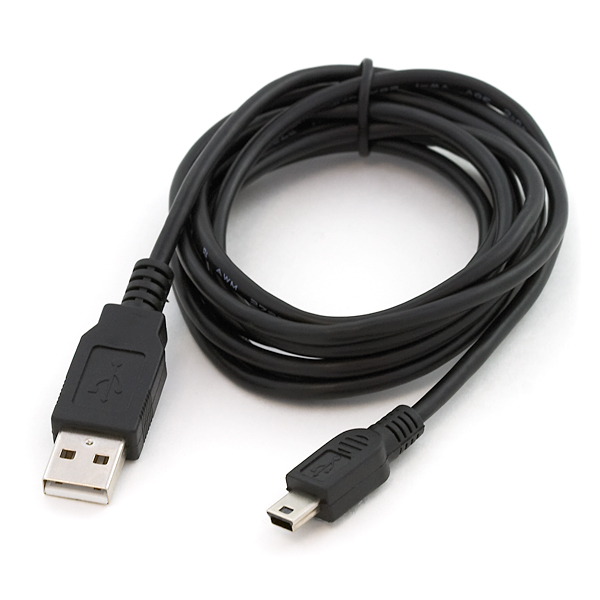
Can I connect my tablet to an old TV? Older models do not have either HDMI or USB connectors. Older TVs offer RCA ports for connection, popularly known as "tulips". If you need to connect a tablet and such old equipment, then use a special converter - an adapter (micro-hdmi adapter) that configures different types transfer of information. It will allow you to connect to the TV without problems.
Such adapters have an input and an output. You need to connect the tablet to the HDMI cable and insert it into the input. Composite cables (“tulips”) are connected to the output: two audio cables (red and white) and one video cable (yellow). They go to the TV.
Such converters are connected to both American and European television systems due to the NTSC / PAL switch. In Russia, the PAL system is used.
No additional driver installation is required. Work will begin with the inclusion of the tablet.
Often for mobile devices you need to buy additional controllers that will allow you to connect to the converter. They function as additional adapters between micro-USB and HDMI cable.
The device (both the converter and the controller) comes with a cablemini-USB to recharge it.
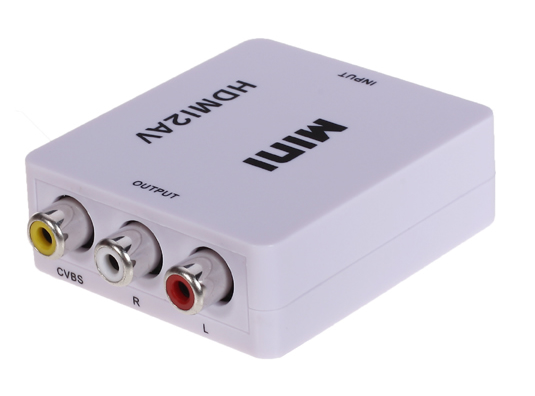
Video instruction
This video shows the process of connecting a tablet via an HDMI cable.
In contact with
Is a big or small screen better? For a home, of course, a large one has many advantages! It is more pleasant to watch movies or videos on it, and show your own videos and photos to family and friends, and, of course, play games. In this case, the tablet turns into a kind of touch remote control, which is convenient to operate.
Therefore, if you have a tablet and a modern TV, sooner or later you will think about how to connect them and get additional benefits.
Wired connection
Most the obvious way connections - use a cable (this is how we connect media players, DVD and Blu-ray players, hard drives). Modern tablets and TVs allow several wired connection options.
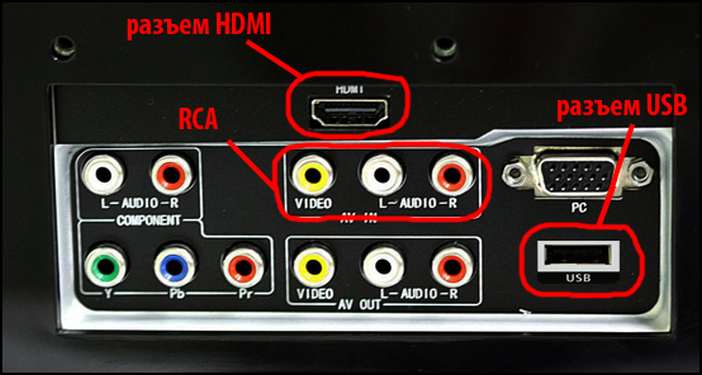
Let's look at the most obvious ones:
USB
If your tablet supports mass storage mode, you can simply connect it with a cable to the TV's USB port. In this case, the TV will open it in the same way as a regular flash drive or HDD. You can scroll through folders, open files, rewind videos using the TV remote control.
Unfortunately, this is not possible on devices with and above. The connection as a storage device is replaced by an MTP connection there. As a result, by connecting such a tablet or smartphone to a TV via USB, you suddenly find that the device is not recognized. Or the TV sees the folder structure, but does not recognize a single file in them. This is all the more annoying because, for example, with Windows phone there is no such problem.
This is the case even in the "ecosystem" of one manufacturer. We tried this connection with LG G Pad 8.3 (Android 4.4) and LG TV; The TV could not detect the tablet at all. To check, we connected an LG G2 smartphone (Android 5.0.2) to the TV: the device was recognized. The TV was able to read the folder structure, but they all showed up as empty. Therefore, if you are using modern model tablet, go to the next step.
MHL/HDMI/SLIMPORT
 There are several wired options for connecting your tablet to your TV. The principle of operation is the same for them: the port of the Android device turns into a standard video output and is paired with the HDMI input of the TV. This method has no alternative if your TV has an HDMI input, but is not equipped with a USB port (this is found in models of the last decade).
There are several wired options for connecting your tablet to your TV. The principle of operation is the same for them: the port of the Android device turns into a standard video output and is paired with the HDMI input of the TV. This method has no alternative if your TV has an HDMI input, but is not equipped with a USB port (this is found in models of the last decade).
Today there are several implementations of this approach:
-
Micro HDMI or Mini HDMI. Tablets are rarely equipped with this output (examples are Acer Iconia Tab A500 or Enot J141). In fact, the connection is no different from connecting a media player or DVD. Connect cable to tablet port and input
TV; everything. Now everything that happens on the tablet display is displayed on the TV screen. You can freely control the tablet, run videos on it, show photos, play games, and everything you do will be automatically broadcast on the TV screen. - MHL. Its main difference is that instead of a separate HDMI port for video output, a standard Micro USB connector is used. To connect, you need a special adapter or cable. Otherwise, it is fully consistent with HDMI.
- SlimPort. In use, it is completely similar to MHL: using a cable or adapter, you connect your Android device to the HDMI port of the TV (DisplayPort is also supported, but this is rare for TVs).
 Each of these standards allows you to display high quality video (up to 4K) and multi-channel audio on your TV screen. All you need to know to connect is the specific video output standard of your device. The only inconvenience is that you have to get an appropriate adapter or cable (SlimPort or MHL).
Each of these standards allows you to display high quality video (up to 4K) and multi-channel audio on your TV screen. All you need to know to connect is the specific video output standard of your device. The only inconvenience is that you have to get an appropriate adapter or cable (SlimPort or MHL).
Wireless connection
DLNA
Nowadays, wireless connections look much more attractive. If your tablet and TV are connected to the same local network, it is tempting to use DLNA technology to pair them. Modern TVs usually do not need additional devices and have a built-in DLNA function. For older models that are not designed for a network environment, the DLNA center can be a media player, game console, or Android stick ().

The easiest way is to install a DLNA server on your smartphone (if it is not already installed by default). Modern Android devices already have DLNA support built in.
To enable it, you need:
- Open Settings
- In the "Networks" tab, find the item "Sharing and connection"
- In this section, find and open the "Media Server" item
- Check the box "Content access mode"
- Define content type for public access (Photos, Videos and Music are available)
After that, your tablet will work as a DLNA server, and the media files hosted on it will be available to the TV. If UPnP mode is not yet enabled on your router, then you need to enable it (look for instructions specifically for your router model). When your TV recognizes the DLNA server you have activated on your tablet, you will need to allow the connection to it.
After that, your tablet will appear in the list of inputs as a drive. From the TV, you will have direct access to the photos, videos and audio files on it (if you have made them available).
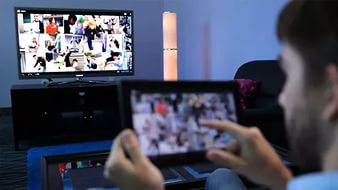 However, using a local network is optional. Today, tablets are increasingly equipped with Miracast technology, which allows you to directly connect to your TV via Wi-Fi without the use of third-party devices.
However, using a local network is optional. Today, tablets are increasingly equipped with Miracast technology, which allows you to directly connect to your TV via Wi-Fi without the use of third-party devices.
By enabling Miracast on the TV and on the tablet, you can display the image from the tablet display on the TV. For example, for playing games or working with the Internet, you will need this particular mode.
With a wireless connection, your tablet will consume energy for communication and video streaming, and will not be recharged from the cable (as with a wired connection). Therefore, no matter which wireless connection method you choose, keep an eye on the charge and, if possible, put the tablet on charge.
Kibgdia team 02.02.2017 22:56Quoting Hope:
Hello. You'll have to clarify exactly how you're trying to connect your tablet to your TV. If you're using an HDMI cable, it's possible that your tablet and phone just have a different version of HDMI (newer), while your TV uses a more old version. Much depends on the cable itself, which can also be of different versions. All this must be taken into account. From a distance, I can't give you much advice. You need to check everything, look in the descriptions for support for HDMI versions, and so on. If via OTG, then again, you need to check the support for OTG functions on the tablet and phone. Sometimes old phones work better with OTG than new ones, which is due to the hardware of the device (here it depends on the manufacturer). In general, you need to personally understand. Maybe if you use an OTG \ HDMI adapter - it does not fit your phones. In this case, you need to try another adapter.
#12 team kingdia 16.06.2016 13:22
Quoting Dmitry:
Hello! Please tell me why I don’t have HDMI in the settings on my tablet. I connect the tablet to the TV, nothing shows the telly.
Hello. You don't need to set up anything. Just plug in the cable and that's it. On the TV, you need to select the interface for receiving the image. That is, we connected HDMI and selected the HDMI signal source on the TV. That's all. And nothing is configured on the tablet itself, everything is automatically determined there. Perhaps the HDMI cable was simply connected incorrectly, maybe the cable is not working, maybe something was done wrong on the TV (the wrong mode was turned on). Here you already have to look in person, I can guess for so long.
Details Questions and answers
Usually, the question of how to connect a tablet to a TV via USB to view media files on a large screen arises when there is no HDMI interface in the gadget. There are two ways to solve this problem. In the first case, the tablet acts as a regular USB drive, and in the other, a full-fledged media player. The convenience of this solution is that not only all modern TVs, but also any mobile gadgets are equipped with USB connectors.
tablet like USB stick
The micro-mini-USB – USB connection allows you to display videos and pictures on the TV screen, as well as play audio files stored in the tablet's memory on the built-in media player. However, to clone the display of the gadget, for example, to display game process, web browser page, or streaming media will not work.
Setting up such a connection is carried out in the following order:
- One end of the USB cable is connected to the TV, and the other end is inserted into the tablet's micro-USB socket.
- In the menu that appears on the display of the gadget, the item "Connect as a drive" is selected.
- The TV remote control selects the type of external connection: the Source button (Source, Input, Input) - “USB storage”.
- A list of available logical drives and the files stored on them will appear on the big screen.
Tablet as media player
This type of connection is only ideal when both the TV and tablet support MHL technology (Mobile High Definition Link). Well-known manufacturers such as Sony, LG, Samsung, Toshiba, HTC and others took part in the development of this standard. With it, gadgets can stream high-resolution video and sound to external display devices (TVs and monitors), as well as clone any image from their display.
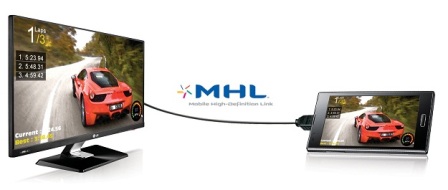
A passive micro-USB to HDMI cable is used to connect compatible devices. Usually there is only one MHL-HDMI jack on the TV, and you can recognize it by the corresponding marking on the case or by referring to the technical documentation. When setting up the connection in the TV menu, you should select the MHL-HDMI port as the external signal source. In this case, not only the transmission of high-quality video and sound will be carried out, but also the parallel charging of the tablet battery, ensuring that it does not turn off at the most inopportune moment.
A noticeable advantage of such a wired connection is the absence of visible delays when displaying content on the tablet and on the TV. True, the resolution of the picture on the big screen will correspond to the capabilities of the gadget's display. If only a tablet supports MHL technology, you will need an active cord with an adapter to connect it to a TV. In addition to a micro-USB connector and an HDMI socket, it also has a USB connector designed to connect external power.
